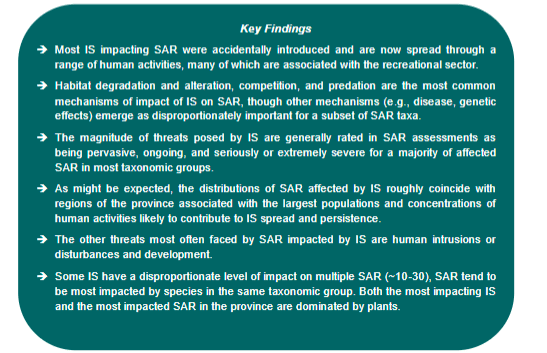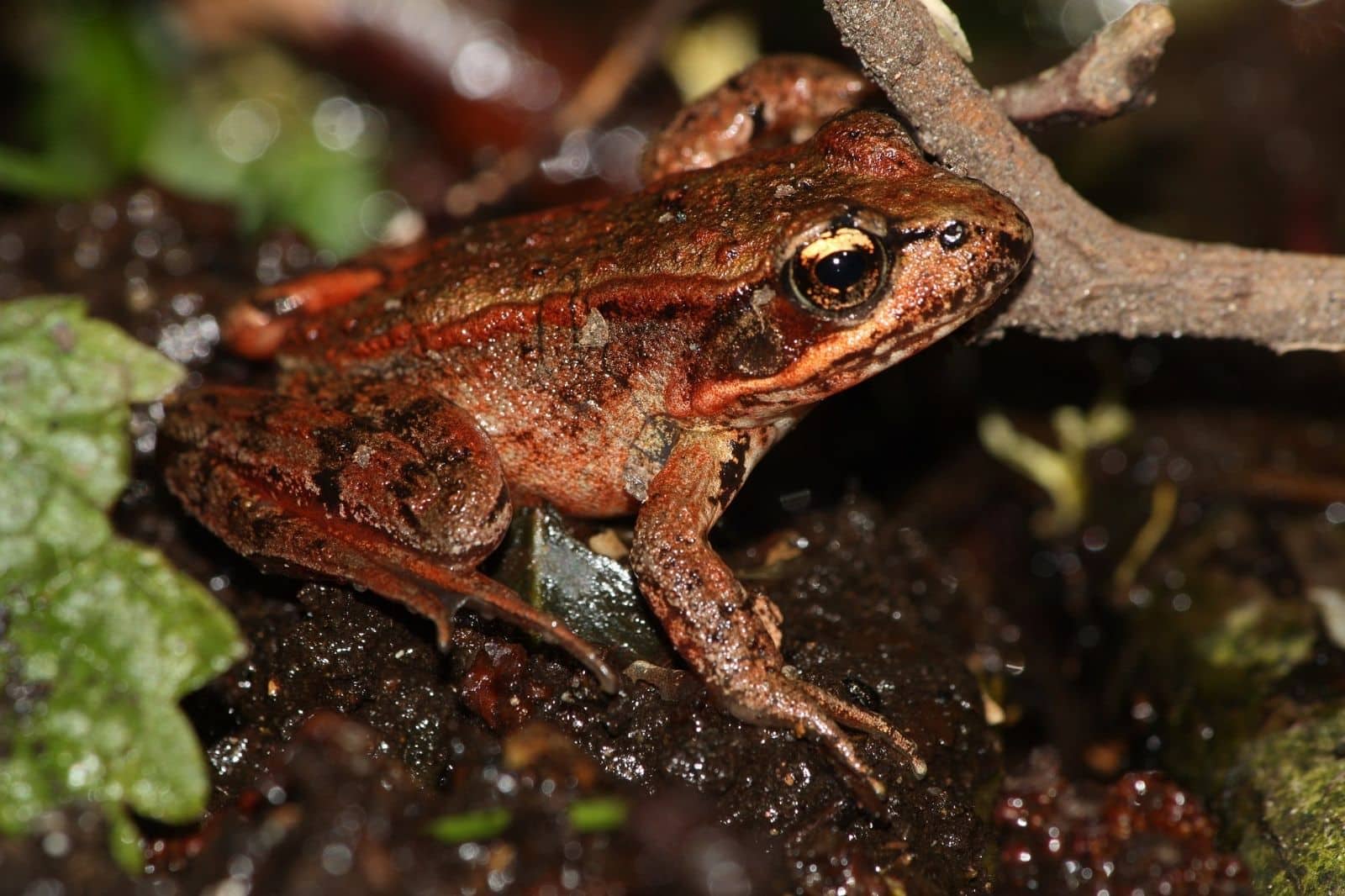Published November 23, 2021
A Systematic Assessment of Invasive Species Impacts to Species at Risk in BC (2021)
As intercontinental trade and travel have become quicker and more frequent, so too have introductions and invasions by non-native species both globally and across Canada. Invasive species are the non-native plants, animals or micro-organisms found outside their natural distribution that negatively impact the environment, people (including human health) and the economy. They can spread quickly, compete for resources, prey upon native species, impact industry, dominate natural and managed areas and alter ecosystem structure and function.
According to the International Union for Conservation of Nature (IUCN, 2000), invasive species are second only to habitat loss in reducing biodiversity and the second most common cause of species extinctions. British Columbia (BC) has hundreds of species of concern according to the Committee on the Status of Endangered Wildlife in Canada (COSEWIC) and listed under the federal Species at Risk Act (SARA).
In order to protect BC’s biodiversity, especially species that are COSEWIC – assessed and species at risk (SAR), it is important to fill gaps on how they are directly or indirectly impacted by invasive species.
With financial support from Fisheries and Oceans Canada’s (DFO) Canadian Nature Fund for Aquatic Species at Risk (CNFASAR), ISCBC funded a thorough literature review and analysis of the impacts of invasive species on species at risk in BC that was awarded to ESSA Technologies.

The final report is now available and includes additional knowledge on the impacts of invasive species on SAR, information to help address priority threats, inform and support SAR conservation, management strategies and planning, and identifies the need for future research.
Share


















